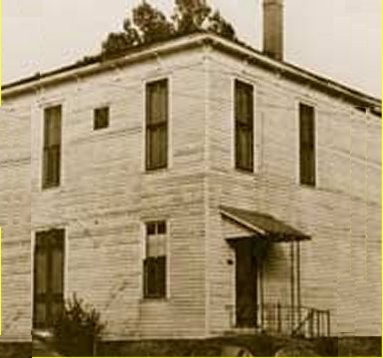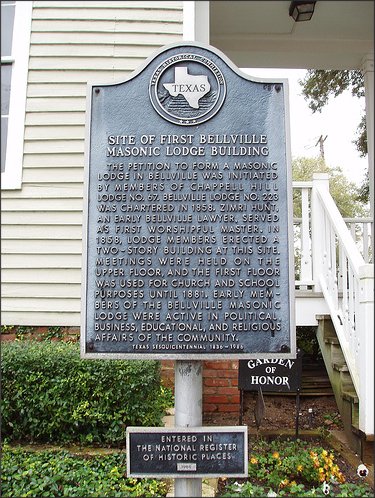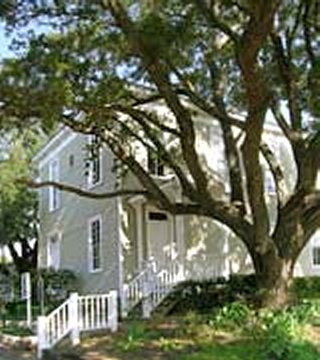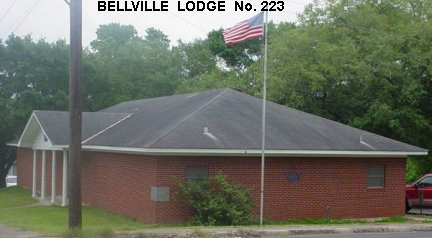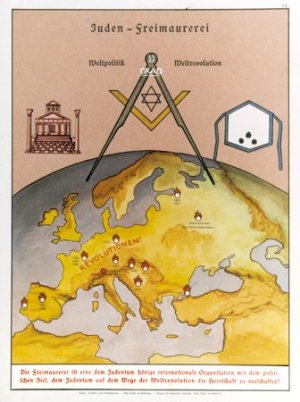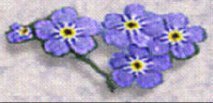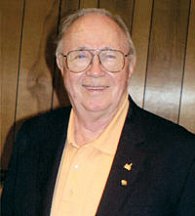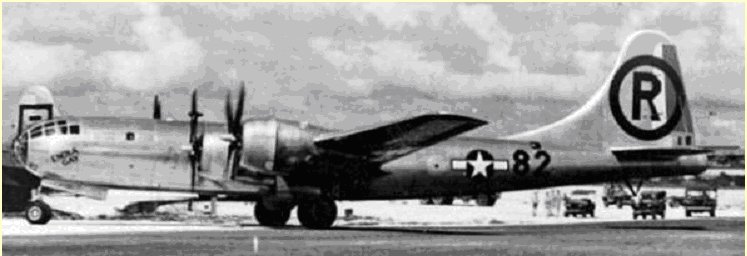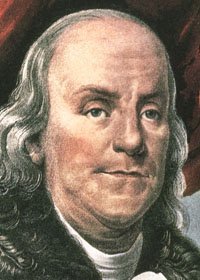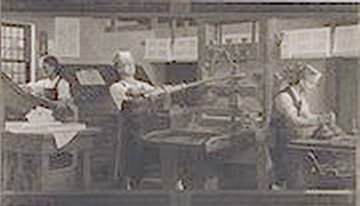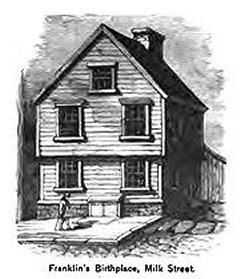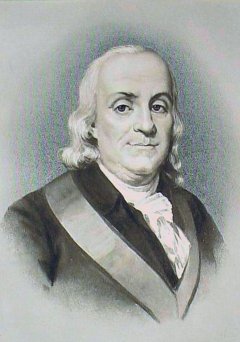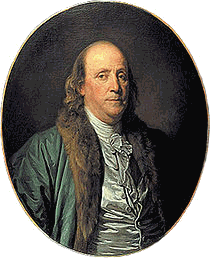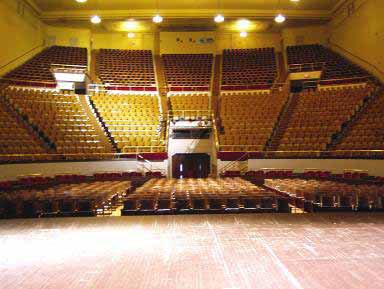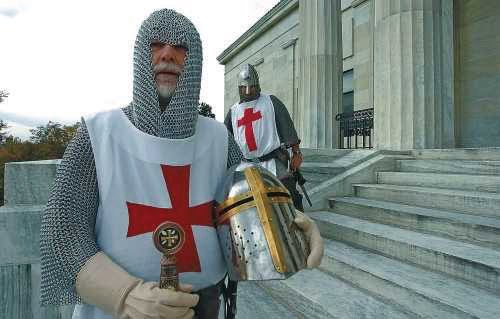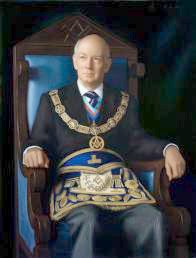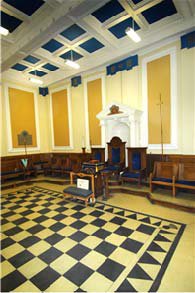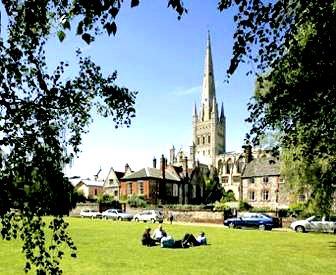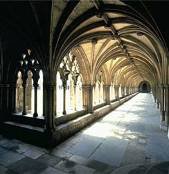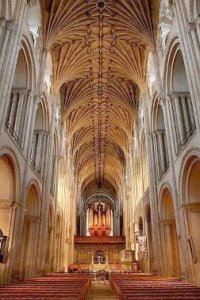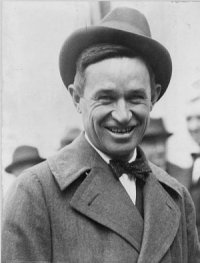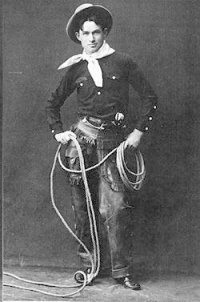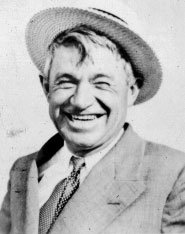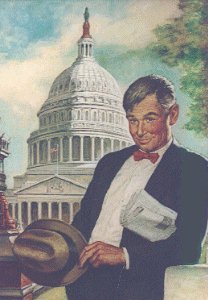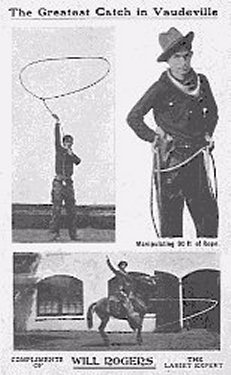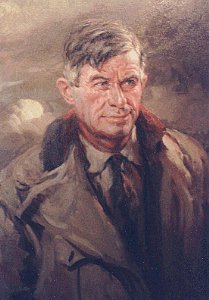
|

Bellville Masonic Lodge #223 AF & AM
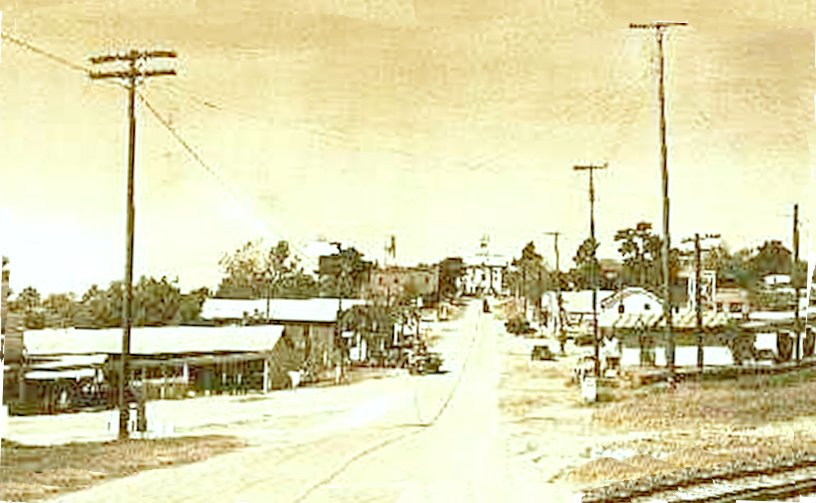 The City Of Bellville, Texas - Circa 1930
|
|
Page II | |||||||||
This Small Town Texas Mason's E-Magazine is not affiliated with any state Grand Lodge or individual Blue Lodge. It was created to enlighten, educate and entertain Masons and non-Masons alike and as title suggests, it does feature a small town Texas Masonic Lodge and a story of Texas Masonic history in each issue
A very sincere effort was made to avoid using any copyrighted material, without permission or giving credit to the author, in the creation of this web site. If you discover something that is yours, without giving you due credit, please let me know and due credit will be given or the item will be replaced.
Any material in this site may be used to increase the understanding of Freemasonry.
Story tools: |
Bellville Masonic Lodge #223 AF & AM
Why Is Masonic Ritual Regarded As So Important?
New Zealand's Secret Societies Under Scrutiny
Masons Chip Away At Secrecy To Build Ranks
Freemasonry Under The Swastika
Texas Masonic History and Heritage
How One Brother Helped to Shape History
Franklin-Freemasonry And The Enlightment
Why Is Masonic Ritual Regarded
Knights Templar Documents Offer Glimpse Of Vatican Templar Trial
| ||||||||
|
Page IV |
|
By JEREMY ROSEN • Courier-Post Staff
It used to be that Freemasons would act as stealthy public servants, shunning the spotlight and sealing their lodges and secrets from those outside their brotherhood.
But statewide, the fraternity is suffering from decreased enrollment and has been forced to open up a bit. Since 2000, the number of Freemasons in New Jersey has decreased by nearly 8,000 to 27,800. In its heyday, after World War II, the fraternity had 110,000 members statewide because of postwar morale, said Douglas Policastro, administrator at the Masonic Home of New Jersey on Jacksonville Road here, which now provides health care to the general public. Freemasonry, which grew from the stone gills of the Middle Ages, has a long history in this state. New Jersey claims to have the first known Freemason in America, John Skene of Scotland, who settled in Burlington County in October 1682, according to Freemason historian Richard Mekenian, who joined the fraternity 27 years ago. Other foreign-born Freemasons, such as Andrew Robeson, followed Skene and settled in Greenwich, the 73-year-old Spring Lake resident said. Daniel Coxe from Burlington County was the first provincial Grand Master Mason in America in 1730, governing Masons in the state under the auspices of the Grand Lodge in England where modern Freemasonry was founded in 1717, he added. New Jersey's first local lodge, St. John's No. 1, opened in Newark in 1761, Mekenian said. Freemasons of the state's 145 local lodges are men, 21 and older, of diverse careers and religions, living clean lives of service, said Mekenian. Numbers have declined because some men have turned to different types of organizations while some have more than one job or take care of their children, Policastro said. Freemasons are not allowed to solicit potential members. Instead, those interested must ask a Master Mason to join. "However, now we're more open and say "Have you considered it? Here's a pamphlet,' " Policastro said. "We try to take good men and make them better." To boost enrollment in 2004, the Freemasons started one-day classes at six locations statewide where men, 21 and older, could earn their three degrees to become Master Masons. Under normal scheduling, each degree takes one month. "It didn't sacrifice the sacredness," Policastro said, and that year, 1,500 Freemasons were enrolled in a one-day class at a military base. The availability of one-day classes is up to the Grand Master Mason or state Freemason governor. This year, they have not been available, Policastro said, in order to keep local lodges active and practicing rituals. There are 24 lodges in the tri-county area, which he said have remained steady throughout the decline. Matthew Daubert, 25, of Lumberton hopes to join one of those lodges by earning his third degree at the end of October. The recent Rutgers-New Brunswick graduate hopes the Mount Holly lodge will give him a means for doing good things. Daubert, who did his own research on Freemasonry after being intrigued by lunch discussions among Freemason co-workers at the Masonic Home, said earning his degrees has been challenging. "There's a lot of learning and personal enlightenment. The traditions date back hundreds of years, and I can have a chance to give back exactly like Benjamin Franklin did as a Freemason in Pennsylvania," he said.
To attract members like Daubert, Policastro, Grand Master Mason in 2006, said the Freemasons decided 10 years ago to alter their approach and have a strong community outreach with publicized events.
|
|
Page V |
|
Contunied From Page IV "It used to be Masons would do good deeds and take no credit, like a secret society. Years ago, meetings and lodges were closed," he said. "Now, the public (is) invited to meetings when there are speakers or meetings to include public opinion. We do not want to be just a building on the corner." To increase community presence, Policastro said, the Freemasons have publicized events like blood and food drives and increased their presence in child development, by becoming involved in the Boy Scouts of America and helping teachers at their established free children's dyslexia learning centers statewide in Burlington Township, Northfield, Scotch Plains and Newark. Mekenian, governor at the dyslexia learning center in Burlington Township, said Freemasons offer college scholarships, donate hundreds of thousands of dollars annually to charities and sponsor the arts in Burlington Township and other towns. To attract adolescents and encourage family membership, the Freemasons have auxiliary community service groups, the Rainbow Girls, for females ages 13 to 21, Eastern Star, for women 21 and older, and DeMolay, for boys 13 to 21. Policastro said he hopes DeMolay, which has 800 members statewide, will continue to be a feeder into the Freemasons. As for their secrets, Mekenian said the hype has been rather high. They have been romanticized in print or films like "National Treasure," he said, or divulged, like in the movie "The Man Who Would be King" that showed characters with an ancient Freemason symbol and tool, a stone compass and square. Mekenian and Policastro cited passwords, handshakes and symbols as ways Freemason brothers worldwide connect and help or comfort each other if they are lost or afraid. "We are not a secret society, but our private parts are modes of recognition and the way we confer our three degrees," Mekenian said. "The main reasons for secrets are to assure we have people of good moral character."
Reach Jeremy Rosen at jrosen@camden.gannett.com.
|
|
By Richard H. Sands, PGM
When a Mason sits in a Lodge Room, his attention is drawn to the Letter “G” and the rough and perfect ashlars in the East, the
Three Great Lights in Freemasonry, the Thrice Burning Tapers at the Altar, and the two Brazen Pillars in the West. But there are
many other symbols that are less well known and often hidden or simply not obvious. Among these are the twelve signs of the
Zodiac.
The word Zodiac comes from the Greek word, Zodiakos, which means a circle of little animals. A Zodiac is a zone in the sky around the ecliptic and extending eight degrees on either side of it. This “belt” is divided into 12 equal divisions and these occur every 30 degrees of latitude. The ancients divided it this way because they contain the sun, moon, and most of the major planets. The names of the zodiac divisions are signs which, because of the “precession of the equinoxes,” do not correspond with the constellations that have the same names. In many Lodge rooms, the pillar of Jachin sets on a parallelepiped whose top is square and whose four sides often have four signs of the Zodiac carved on them. Often, for no obvious reason, these signs are Taurus, Scorpio, Gemini, and Cancer. The craftsmen who designed the pillar could have put three signs of the Zodiac on each of the four sides, but probably thinking that this would be too busy, chose only one for each side. According to modern astrology, those born between April 21 and May 21 are under the sign of Taurus, between May 22 and June 21 under Gemini, between June 22 and July 22 under Cancer, and between October 24 and November 22 under Scorpio. The next time you are in a Lodge room, look to see what is under the pillar of Jachin. The connection to modern Freemasonry is primarily through the number “12,” although the Reverend F. DeP. Castells, AKC, in his The Apocalypse of Freemasonry (A. Lewis, London 1943) talks about the mosaic pavement and its border having to do with the zodiac. The auther states that the original border of the Mosaic Pavement was a Zodiac, “that is, a belt either circular or oval, which from ancient times used to be divided into twelve parts, whereon were depicted the twelve signs by which certain constellations, or groups of stars, were indicated.” He then continues by quoting a part of the then ritual used by the Master when he explains the first trestleboard to the candidate saying, “this symbol refers to the planets, which in their various revolutions form a beautiful border or skirt work around the sun.”
It is interesting to note that there were 15 fellowcrafts who plotted against Hiram, but 12 of them recanted. There are seven regular
officers of a Lodge, and they are bound together by five points of fellowship. There are 12 months in the year. I hope you enjoyed
this tidbit of Masonic education. |
|
Page VI | |||
|
By Bro. Kenneth W. Newman, Historical Interpreter,
The text at the bottom reads; "Freemasonry is an international organization beholden to Jewry with the political goal of establishing Jewish domination through world-wide revolution."
Adolf Hitler had a negative view of Freemasonry long before he took office as Germany's Reich Chancellor on Jan. 30, 1933. He wrote disparagingly about the fraternity in his 1924 autobiography, "Mein Kampf." He believed that Freemasonry was part of an "International Jewish Conspiracy" which was led by Germany's former enemies and was responsible for every conceivable evil that afflicted the country. He was not alone in this belief. There was a culture of anti-Semitism in Germany at that time that dated back to the 1870s, but after the Weimer Republic's defeat in World War I, anti-Semitism had renewed interest.
Upon assuming power in 1933, Hitler did not ban Freemasonry outright; rather, he took a slow, methodical approach to the destruction of the Craft. One of the first measures of persecution was taken in early 1934, when Roland Freisler, State Secretary of the Reich Ministry of Justice and President of the Volksgerichtshof (People's Court), ruled that Masons who did not leave their lodges prior to Jan. 30, 1933, could not join the Nazi party. Shortly thereafter, Hermann Goering, Prussian Minister of the Interior, called upon lodges to dissolve "voluntarily," but only after his approval. At the same time, Schutzstaffel (SS) and Sturmabteilung (SA) units, under their own initiative, proceeded to commit violent acts aimed at lodges in various cities throughout Germany.
The persecution heated up in May 1934, when the Defense Ministry banned membership in lodges to all personnel (soldiers and civilian employees). Later that summer, the Gestapo started forcibly closing down many Masonic lodges and confiscating their assets, including their libraries and archives. On Oct. 28, 1934, Wilhelm Frick Reich, Minister of the Interior, issued a decree defining the lodges as "hostile to the state," and on Aug. 17, 1935, Frick ordered all remaining lodges and branches dissolved and their assets confiscated.
As the German army conquered Europe and set up occupation regimes, many Masonic lodges were forcibly dissolved. After a lodge was closed, it was ransacked for membership lists and other important library and archival materials. These materials were then sent to the appropriate Nazi office. Many of the confiscated items ended up in anti-Masonic exhibitions, part of a major Nazi propaganda campaign.
To some, the destruction of the Craft became an obsession. Reinhard Heydrich, head of the SS Security Service (Sicherheitsdienst-SD), believed that the Masons, Jews and the political clergy were the "most implacable enemies of the German race." Heydrich became so obsessed that he even created an entirely new division of the SD to specifically deal with Freemasonry, Sicherheitsdienst-Section II/111. This office later became Section VII B 1 of the Reich Security Main Office (Reichssicherheitshauptamt; RSHA).
It will never be known how many Freemasons were put into concentration camps and murdered during the course of the Third Reich. This is because many of the members of the Craft who were placed in the camps were also Jews and/or associated with the German resistance or other political opposition groups.
|
|
Page VII | |
Texas Masonic History and Heritage
Written by Loyd Addy, Jr
Americans to migrate to Texas about 1821. At the age of 27, Stephen Austin, a Master Mason, accepted and successfully carried out his father's deathbed request to settle three-hundred families on a land grant he had obtained from Mexico. Austin was authorized by Governor Antonio Martinez to carry on the colonization under his father's grant. Martinez warned Austin that the Mexican government was not prepared to extend administration over the colonist and that Austin must be responsible for their good conduct.
By the 1830's, the settlers from the United States outnumbered the Texas Mexicans and the Mexican dictator Antonio Lopez de Santa Anna imposed measures to reverse this trend. The settlers rebelled, and the Mexican government outlawed Masonry in Texas on 25 October 1828 because of the political philosophies of Texas Masons. In 1828 Austin and six other Masons met to form a Masonic Lodge in Texas; however it was never chartered. In March 1835, five Master Masons met beneath an oak tree in Brazoria and petitioned Grand Master John Holland of Louisiana for a charter to form a lodge in Texas. By the end of 1837, three lodges had been chartered in Texas by the Grand Lodge of Louisiana. On 20 December 1837 President Sam Houston presided over a convention of representatives of these three lodges and elected Anson Jones the first Grand Master of Masons in Texas.
Freemasonry was not so much the instrument of political change, as it was simply the most natural forum for the exemplification of those principles and tenets that free men hold most dear. On 1 March 1836, Sam Houston and 58 other delegates rode into Washington-on-the-Brazos for a Convention to declare independence from Mexico. Twenty-two of these delegates were Masons. The Convention appointed Sam Houston Commander-in-Chief of the Texas Army. Eleven of the twenty-five on the committee appointed to draw up a Constitution of the Republic were Masons. The men who led the revolution and formed the government were, by and large, active Masons whose Masonic philosophy was the inspiration behind their deeds.
Between 1838 and 1845 the Texas Grand Lodge issued charters to twenty-one more lodges, and membership increased from seventy-three to 357. In addition, there were probably some 1,100 Masons from other jurisdictions living in Texas at this time. From the Texans' resolve to gain independence from Mexico, to the annexation by the United States, Masons took most of the major parts. Although constituting only 1½ percent of the population, Masons filled some 80 percent of the republic's higher offices. Every president and vice president of the Republic of Texas was a Mason, as was the first governor. Every chief justice of the Republic was a Mason. Fifteen Masons were in the first House of Representatives and seven were in the first Senate, and eleven in the executive branch. Thirty-one governors of Texas were Masons, and two of the governors also served as the Grand Master of Masons in Texas. Many cities and towns, and 102 Texas counties were named for men who were Masons. Schools, buildings and awards
are named for them. The first public building in a new community was often a two story Masonic Lodge, with the first floor serving as a school classroom or meeting hall.
Masons have a good reason to be proud of their heritage and involvement in the history of Texas, and they continue to affect the course of Texas history today. Masons of Texas practice the tenets of the Fraternity, to assure "the world at large may be convinced of its good effects." | |
|
Page VIII | |
|
It is a day the United States, and the world, will not soon forget: Aug. 6, 1945. On this day, the United States dropped an atomic bomb, the first of its kind, on Hiroshima, Japan. For one Pennsylvania Mason, this day is remembered through his first-hand account aboard the Enola Gay, the B-29 Superfortress bomber responsible for dropping the bomb on Japan.
His primary job was guiding the plane to the target and returning to base, but Bro. Van Kirk also faced situations in which he had to use the B-17's machine gun. It was always a thrilling experience to see the wings of attacking planes light up as they fired. He recalls his aim was less than perfect.
"We were the lousiest shot you ever saw," he said of himself and bombardier, Lt. Tom Ferebee. "We were credited with using the most ammunition without hitting anything."
Throughout his career as a navigator, he flew on 58 missions in Europe and one in the Pacific. He was a member of the first B-17 bomber groups out of England to fly over occupied Europe. Another one of his missions was to lead a group of six planes transporting Gen. Dwight D. Eisenhower and his staff over hostile waters, from England to Gibraltar, in the southern tip of the Iberian Peninsula. All insignia identifying the planes and the crew as American was removed.
"A higher authority tells you what you're going to do and when, and as the lead airplane, it's your job not to [foul] it up," Bro. Van Kirk said. "If you do, everyone will follow."
Once in Gibraltar, an important naval base for the British, Bro. Van Kirk saw an image he'll never forget.
"To watch the invasion fleet steaming through the Strait of Gibraltar was a sight to see," he said. "It was small in comparison to the invasion at Normandy, but to this day, it makes my blood chill."
His most famous mission, at the age of 24, was to drop the atomic bomb on Japan.
"At the time, we didn't realize we were making history," Bro. Van Kirk said. "Our objective was to shorten or end the war; to stop the killing. We didn't realize until the press brought it up what a big deal it was."
His crew included Lt. Ferebee and pilot Col. Paul Tibbets, with whom he had flown many missions. They were told about the mission in early 1945, and were given full disclosure on the purpose and significance of it. After months of training and briefings, the only detail left undetermined was the weather.
"We knew how much money had been spent on atomic energy," he said. "They built cities just to develop its capabilities. The amount of scientific man power - all of it - was resting on our shoulders. If we were not successful, we didn't have many other chances to end the war. We would have to invade Japan and many lives would be lost."
Typically, a bomb explodes with the delivery plane still in the air above it, so the pilot immediately sees if the target was hit. With the atomic bomb, according to scientists, the plane had to be nine miles away before the bomb detonated or they "wouldn't make it," Bro. Van Kirk said. "We stripped the airplane of any weight we could to make it lighter. After releasing the bomb, we had to make an immediate 150 degree turn to get the maximum distance from the explosion. There were 43 seconds from the time the bomb was dropped to its explosion."
"All we saw was a bright flash, like a photographer's flash in a dark closet. The first shock wave, with a magnitude of 2½ g, hit us and it sounded like sheet metal snapping. We turned around to take a look and saw the large white cloud well above our altitude. It was shades and hues of purple on top and white around the base. The entire city was covered with thick black smoke, so we couldn't make any visuals of the damage."
After that unforgettable flight one summer day, debates flourished about the use of nuclear weapons. Immediately after the war, people seemed in favor of using atomic bombs, but as time has passed, opinion has changed and the today the argument still rages.
"It caused a lot of casualties, but overall saved many lives. The Japanese would not have surrendered by August 6. They had large land armies and thousands of people were being killed throughout China and other countries they had invaded," Bro. Van Kirk said. "Now that we understand the dangers of using one, I hope atomic weapons are never again used in warfare."
His military service earned him a Silver Star and other medals and ribbons. He went on to receive a bachelor's and master's degree in chemical engineering and moved all over the world as an employee of DuPont. He has four children and seven grandchildren, and enjoys taking vacations with his family.
"I'm really blessed with a wonderful family," he said. "We practice togetherness, when we have the time."
His father, uncle and many other relatives were Masons, so it was an easy decision for him to join the fraternity. He has made many friends in the process. Members of his lodge presented him with his 50-year Masonic Service Award in the spring.
Bro. Van Kirk was featured in the HBO documentary, "White Light/Black Rain: The Destruction of Hiroshima and Nagasaki," which premiered in August. He also speaks at many schools and other events, including a recent occasion at his lodge. The interview requests have waned over the years, although close to the anniversary of the bombing, he receives inquiries from talk shows and radio shows.
A modern-day hero, patriot and Mason, Bro. Van Kirk's brave and selfless service helped to change the course of history and preserve the freedom we enjoy today. |
|
Page IX | ||||
|
By: Richard E. Fletcher From the Rural Lodge Newsletter
Richard E. Fletcher is a PGM (VT), Executive Secretary of the Masonic Service Association of North America and a member of the Lodge of the Nine Muses, 1776, Washington D. C. where this paper \\'as originally given.
"With twenty-three printing establishments and, by 1776, seven newspapers— more newspapers even than London— Philadelphia was the publishing capital of the colonies. It was not only that Franklin's immensely popular Poor Richard's Almanac emanated from Philadelphia, but political pamphlets of such far-reaching influence as John Dickinson's Letter from a Pennsylvania Farmer, Thomas Jefferson's spirited Summary View of the Rights of British America, and now, Common Sense, which was selling faster than anything ever published in America. Shops in nearly every street offered an array of goods and enticements such as most delegates to Congress could never find at home. There were as many as thirty bookshops and twice the number of taverns and coffeehouses, with names like Blue Anchor, Bunch of Grapes, Tun Tavern, Conestoga Wagon, Rising Sun, Half Moon, and each had its own clientele. The Free Masons convened at the staid old Indian King on Market Street." This was the Philadelphia John Adams found when he arrived in 1774, a new member of Congress, as described by David McCullough in his outstanding biography of John Adams. Later Adams was appointed a Resident Commissioner and moved to Paris in 1777 where he joined Franklin. He was a desperately lonely man. David McCullough describes Adams as: "Privately, he was distraught and painfully lonely. It had been more than three months since he left home and still there was no word from Abigail. He worried about her, longed for her. Franklin amused himself playing chess with his fashionable friends; Adams did not know chess. Franklin had his Masonic meetings; Adams was not a Mason." It's very clear that Benjamin Franklin had interests other than pure politics. Freemasonry was an important part of his life. David McCullough recognized this and remarked how it made a difference in the lives of the two men.
"The suspicions Franklin aroused were only increased by his association with one of the most prominent subversive organizations in the French capital. The Masonic Lodge of the Nine Sisters had been the brainchild of the late husband of Madame Helvetius. Named for the muses of the arts and sciences, the lodge deliberately embraced philosophers of all disciplines; among its members were some of the freest-thinkers in the realm. This, and the secrecy the lodge shared with all Masonic affiliates, rendered it suspect in the eyes of the keepers of the status quo. Franklin was aware of these suspicions, and as senior American commissioner he took them into consideration. But as a longtime Mason, a lover of all nine sisters, and an incorrigible free-thinker, he could not decline membership. He was inducted during the spring of 1778 as the 106th member. He came in the door just behind the most famous French subversive of the age. Voltaire had been skewering orthodoxies of various sorts for decades, making him persona non grata with the monarchs of France and Prussia, to name nvo in particular. At Franklin's arrival in 1776 Voltaire had been exiled from Paris for a quarter century. Yet as he felt the life flowing out of his bony frame—whether retarded or accelerated by the fifty cups of coffee lie was said to drink each day, no one knew— he insisted on returning to the capital. " In his book “Revolutionary Brotherhood”, Stephen Bullock talks about Franklin, beginning with a reference to Jean Theophile Desag uliers: "His writings later inspired his Masonic Brother Benjamin Franklin's scientific work. Desagulier's demonstrations helped spread enlightened science in England as well. In 1719, while serving as Grand Master, he gave a series of lectures in the great rooms owned by Sir Richard Steele, the coauthor of the Spectator and, according to some evidence, Desagulier's Masonic brother. This connection between enlightened ideas and the fraternity continued throughout the century. Franklin, whose newspaper reprinted a story about Montesquieu's 1730 initiation, led the aged Voltaire into a Parisian lodge for his initiation forty-eight years afterward." The picture is quite clear. Whatever his original motives for joining Freemasonry, Franklin truly valued his membership. To him it brought comfort, closeness and camaraderie with his Masonic brothers. Membership was also important enough to Franklin to want to share it with Voltaire, one of the most enlightened thinkers of his time.
Part of the reason these events could occur could be summed up in three words: Reformation. Renaissance, and Enlightenment. The first of these major events to occur was the Renaissance, which was a development of western civilization marking the transition from the middle ages to modern times. The Renaissance began in the 14th century. The Reformation was a religious revolution in western Europe in the 16th century which began the breakaway from the traditional religious hierarchy of the day. the Roman Catholic Church. This was the beginning of freedom of religion. The Enlightenment was a term used for the rational, liberal, humanitarian, and scientific trend of the 18th century of Western thought. The period is also sometimes known as the Age of Reason. Representative of the Enlightenment are such thinkers as Voltaire and Montesquieu who were Freemasons and in America, Thomas Paine. Thomas Jefferson and Benjamin Franklin. Of the three. Franklin was a Freemason. What did the Renaissance, the Reformation and the Enlightenment really mean? These three historical movements changed the world. Taken together they helped to stimulate thought, freedom of expression, creativity, and gave us freedom of religion. These were momentous movements that gave people a "sense of purpose."
|
|
Page X | ||||
|
Continued From Page IX
Let's fast forward to today and share some thoughts about where we are as a nation. It could be fairly said that many people no longer go to church for spiritual contemplation or read a newspaper to learn. The successful churches and the successful TV newscasts or print media are those who entertain. We have become a nation who worships mediocrity and in the dumbing down of our country no one can rise to the level excellence. We can only rise to the same level of mediocrity shared by our fellow students or co-workers. Is this helpful? We do this so that no one will have low self-esteem. "High self-esteem" is now praise for doing nothing and accomplishing nothing. Do we pay to see Michael Jordan play at the same level as his teammates? And if we don't, why do we accept it in our schools and universities? Well one of the answers is—it is always easier to go along. Benjamin Franklin was not a man who went along. What had all this to do with Freemasonry? Well at one time Freemasons were looked upon as leaders in the community. They were perceived as good men with a mission. That mission was to help bring a better quality of life in our homes, our communities, our states, and our nation. Today's great challenge for the Masonic Fraternity, in my view, is how to return to a "sense of purpose". How do Masons regain our rightful place as role models in the community? How do we reach out in community involvement? How do we demonstrate one of the greatest slogans of our country. In unity there is strength! In my judgment there is nothing Freemasons could do that would be more important than undertaking the role of unity builder by being seen in our communities, by doing community outreach, and showing by example what it means to be part of a family, not only our own family, but the family of our town, the family of our state, the family of our nation. Without fully realizing it Masons used to do these things. But like the rest of the country our "sense of purpose" had eroded. We have to begin strengthening our lodges because that is where Masonic activity will always take place.
Let's encourage our membership to begin anew the spiritual, the cultural, the moral, and the ethical reawakening given to us by the Renaissance, the Reformation, and the Enlightenment, and let's also be proud that Freemasons were involved in all three. Benjamin Franklin wrote his own epitaph.
What a tribute it would be to this most distinguished man and Mason if we as Freemasons were to take this epitaph to heart. To use the shining example set by Benjamin Franklin, with his '"sense of purpose," to dedicate ourselves to service to our fellowman, as he so faithfully did. | ||||
|
As So Important?
Truth may be taught without ritual, but truth taught by ritual is always taught as the original teachers desired, and makes a
lasting impression upon the mind of the learner. Man has always devised ceremonies of initiation for his organizations; the Men's House of the Indians had them; savage tribes bring their young men officially to manhood by rites which are sometimes rather terrible; ancient religions admitted to the temple only those who could qualify by successfully completing a course of initiation; many modern churches–especially those denominated "high"–have set forms for religious worship; crafts and guilds of all kinds in all ages have had certain preparatory rites. A ritual which becomes sacrosanct in human belief tends to stabilize truth and to keep it uncontaminated by "modern" ideas. Many a man has thought he could "improve" the ritual of Freemasonry. None has succeeded in making better that which was already "best," since its consent was and is living, breathing, sentient truth, conveyed in words, actions and symbols which by their very antiquity prove that they are "best" for the purpose.
Dr. Joseph Fort Newton, beloved teacher of the spiritual aspects of Freemasonry, said: "Ritual is the dramatization of
belief, hope and spiritual dream. It assists imagination by giving form to what otherwise would remain formless, presenting vivid
mental images which lend a reality-feeling to what is often abstract and unreal. It is picture philosophy, truth visualized, at once
expressing and confirming the faiths and visions of the mind."
|
|
Page XI | |||||||||||||||||||||||||||
|
By RW Graeme Marsden from the Rural Lodge Newsletter BOSTON – Today, Attorney General Martha Coakley’s Office released its Report on Professional Solicitations for Charity in 2007. Professional solicitors, who are paid by charitable organizations to solicit donations from the public, are required by statute to register with the Attorney General’s Office… “Many charities rely on professional solicitors to bolster their fundraising abilities, but it’s important for the public to have access to data that can help them make informed decisions about donating,” said Attorney General Coakley. “Donors should do their homework before writing a check or donating online to their favorite cause, and also feel comfortable asking some basic questions about where their money is going when they are contacted by a professional solicitor. … The Report on Professional Solicitations for Charity in 2007 found that on average, of every dollar that a professional solicitor raised in 2007, the solicitor kept 65 cents and 35 cents went to charity. Based on the information gathered from the campaigns that registered with this office in 2007, the report includes the following findings: Of the 621 solicitation campaigns reported, 18 percent (113 campaigns) resulted in the charitable organization receiving 50 percent or more of their campaign’s gross revenue... Eighteen percent of the campaigns (109) resulted in the charity receiving less than 10 percent of the gross revenue. In addition to looking at the results of the report, potential donors should also consider asking some basic questions when they are contacted by a professional solicitor. This includes asking how much of every dollar donated will go to the charity and requesting confirmation of the charity’s name and the services it offers to the public.
Editor Marsden: *Shriners do accept money from the public, but they get something in return, like a Shrine Circus performance. As I understand it, it’s OK for Masons to similarly give value for money, like selling tickets for a special event.
| |||||||||||||||||||||||||||
|
Page XII | |
|
By Michael O'Malley - Cleveland Plain Dealer 4 December 2008 In a basement room cluttered with the guts of a giant theater organ, Don Frerichs, handling a hot soldering ron, connects tiny electrical wires inside the instrument's marimba mechanism. i
"We're giving it our best," said volunteer Frank Sillag, slapping shellac on one of the thousands of wooden parts, this one a gizmo that strikes a crash cymbal. Unlike a church or a concert organ, a theater pipe organ is fortified with percussion, orchestral instruments and an array of crazy sounds: doorbell, train whistle, thunderstorm, horse hoofs, gong, glockenspiel, castanets, car horn and more. In the days of silent films, every movie house in America was equipped with one of these pneumatic contraptions -- usually a Wurlitzer -- accompanying the big-screen antics of tragic clowns, sinister cads and doeeyed damsels. Today, only about 500 exist. When the 2,400-pipe instrument at the Masonic Auditorium is completed, Northeast Ohio can boast of having nine theater organs, possibly the highest concentration in the country. Because so many are here, the American Theatre Organ Society, an international organization founded 53 years ago with the aim of preserving theater organs, is holding its annual convention this July in Cleveland. "We've been getting feedback from people all over the world who are stunned by the number of functioning theater organs in Northeast Ohio," said the society's local chapter President Doug Powers. Unlike other parts of the country, Greater Cleveland has been less aggressive in tearing down old theaters, he said. And his group, which has 117 members, has been vigilant in saving the organs. "Several years ago, the major cities across the country had quite a few of these instruments up and running," said Powers. "But over the years, theaters have closed, some of them have been torn down, some of the organs sold. And it turns out that Cleveland and Northeast Ohio have quite an inventory of these instruments." Some are in private homes and some are in public places. Three are at their original venues -- the Lorain Palace Theatre, the Akron Civic Auditorium and the Canton Palace Theatre. The Masonic Auditorium's Wurlitzer originally was in a theater in Santa Barbara CA. It was sold and resold to private collectors, and ended up disassembled and stored in a Michigan man's three-car garage. Two years ago, the man donated it to the Cleveland group, which rented four big trucks to haul it here. In 1969, the Warner Theatre in Erie PA donated a Wurlitzer theater organ to Grays Armory in downtown Cleveland. It took the organ society 2½ years and more than 10,000 volunteer hours to install it. Grays' "Mighty Wurlitzer," maintained and used for concerts by the organ society, is equipped with 1,200 pipes, ranging 32 feet long to the size of a pencil. The guts of the machine -- pipes, bellows, electromagnetic components, orchestral instruments and soundeffect gizmos, fill two rooms a floor above the organ. A basement room houses a powerful fan and more components. "All of this is operated by wind pressure and a little bit of electricity," Powers said. "There are no speakers. All the sounds are created by air. Everything on this organ is a product of American ingenuity, sweat and talent."
When the Wurlitzer at the Masonic Auditorium's theater is brought back to its second life, the organ society
plans to run old silent films. "Theater organs were designed to take the place of the pit orchestras to accompany
the silent movies back in the 1920s," said Powers. "In order to do that, the organ had to emulate
all those different orchestral sounds -- trumpets, oboes, strings, drums, the crash when the comedian falls.
"Some of it's kind of corny. But it can be done in such a way that is extraordinarily musical. When people
hear this thing, they say, I had no idea.' " |
|
Page XIII | ||
|
By Jay Tokasz
The Templars have been featured as key players in the juicy plot lines of blockbuster motion
pictures and best-selling novels — fueling keen interest in what became of the secretive group nearly 700 years ago.
Those depictions, in movies like “National Treasure” and books such as “The Da Vinci Code,” are mostly fiction. But some Vatican
documents giving scholars and history buffs deeper insight into the Templars’ real past were on display Friday at the Buffalo
& Erie County Historical Society.
The reproduction set of Vatican Templar Trial Transcripts, here for a one-day presentation, are owned by
the Chancellor Robert R. Livingston Masonic Library of Grand Lodge in Manhattan. The Masons’ ownership
of the documents is somewhat ironic, because the Catholic Church historically has opposed Freemasonry
and has banned Catholics from joining lodges.
Thomas M. Savini, the library’s director, acknowledged that the acquisition “will raise some eyebrows” inside
and outside the Masonic fraternity.
A popular theory holds that to-day’s Masons, who number about 53,000 across New York State, including
3,000 in Erie County, evolved out of the Knights Templar. That is one of the reasons the Livingston library
acquired the trial manuscripts in April.
Legend has it that the Templars went underground in the early 14th century to escape persecution by the
inquisitors of King Philip IV of France, then emerged two centuries later in Scotland as the Freemasons.
One branch of modern day Masons that was organized sometime around the turn of the 19th century even
calls itself the Knights Templar.
But the connection between the Knights Templar of the Crusades and Freemasonry is “highly dubious,”
Savini said. “There is no valid historical documentation establishing that link.”
Due to the great deal of interest and inquiry into the possibility of a link, the library’s trustees felt a responsibility
to obtain the trial documents as a resource for both Masons and non-Masons.
The library is one of just a few groups in the United States, including the Cornell University library in
Ithaca, that possesses authentic reproductions of the “Processus Contra Templarios.”
Seven hundred and ninety-nine numbered copies of the trial transcripts became available following the
Vatican’s 2007 announcement that the original parchments, misplaced for hundreds of years, had been
found. The replicas were sold for 5,000 euros (about $6,300) each.
“It’s almost a question of why wouldn’t an organization want to have this as part of their archives,” said
Marlon Gayadeen, who teaches criminal justice at Buffalo State College and helped organize the Buffalo
showing, one of several taking place across upstate New York.
The Masons have long been considered a secret, ritualistic society, although today’s members say those
days are long past. In the 21st century, Freemasons consider their group to be a society with certain private
aspects, not a “secret society” with its negative connotations. Events like the display of the Templar
documents are further proof of that fact.
“We’re removing the cloak, so to speak,” Gayadeen said.
The transcripts, in tiny Latin calligraphy, re-create the folds, faded ink and mold stains found on the original.
Some of the sheets are as long as 6 feet, and sewn together by thread, as was done in the 1300s.
“People who are fascinated or intrigued by history can come up and touch something that represents a
document from 700 years ago,” Savini said. “That tactile experience of history is an important part of education.”
Friday, about 100 people in Western New York got a glimpse of the manuscripts, including the “Chinon
Parchment,” in which Pope Clement V absolved the Templars of heresy charges. Leaders of the Templars
were nonetheless burned at the stake under King Philip IV, who sought to erase his considerable debt to
the financially savvy warrior monks by banishing them. |
|
Page XIV | ||||||||||
|
By Steve Downes Eastern Daily Press Norwich, Norfolk, England
The opening, to launch the 250th anniversary celebrations of the founding of the Masonic province of Norfolk, revealed a spectacular complex of pristine rooms. Chessboard floors and colonnaded walls gave a hint of the intricate rituals that take place behind closed doors, and which give such a cloak and dagger feel to Freemasonry. The doors were opened 250 years to the day since 13 January 1759, when Edward Bacon, MP for King's Lynn and Norwich, was appointed the provincial grand master for Norfolk. Yesterday, the 20th provincial grand master, John Rushmer, was at the Norwich Masonic Centre on St Giles Street for the launch of a programme of events to celebrate the special birthday.
He also announced that he was asking Norfolk's 75 lodges to fundraise throughout the year to pull together £100,000 for the Norfolk Hospice Tapping House Appeal. The lodges will also be offering 250 £250 donations to small community charities in 2009. Other planned events include the 250th provincial grand lodge meeting in St Andrews Hall, Norwich, on 28 May, a summer ball at Sprowston Manor Hotel and a service of thanksgiving at Norwich Cathedral on 6 September. As mayors and council chairmen were shown around the grand Norwich complex, including its chess board floors and uniform seating plans, two members were on hand in 18th century costume to give a hint of what Masonic membership was like in 1759. Mr Rushmer, who is three years into a 10-year term as Norfolk's Masonic leader, told the gathered throng he was “proud of our heritage and continued existence”. He told how the first Norwich lodge was formed at the Maid's Head Hotel on 11 May 1724. A flurry of Norfolk lodges followed, often named after their pub meeting places - including the Rampant Horse, the Unicorn and the Flower in Hand.
Members were keen to stress there was nothing sinister about the Masons, and said persistent accusations that they favoured each other in jobs and contracts were “absolutely not” true. A “your questions answered” booklet said all members entering into the brethren had to state “unequivocally” that they did not expect material gain from their membership.
Norfolk charities that would like to apply for £250 should write to the secretary of the Norfolk Masonic
Charities Committee at 47, St Giles Street, Norwich, NR2 1JR | ||||||||||
|
Page XV | |||
|
By T. L. Thompson, P. M. Iredell Lodge #405. A.F.&A.M. Reprinted With Permission Of The Author
William Penn Adair Rogers was born the youngest of eight children to parents of mixed Cherokee Indian heritage on his father's ranch near Verdigris River on November 4,1879 in what was then Indian Territory. His father, Clement Vann Rogers, was a prominent cattleman and a leader in the Cherokee Nation. Mary America Schrimsher Rogers, his mother, was a vivacious lady, known as the best hostess in the Nations. Will once wrote of his mother: "Mama's name was Mary; and if your Mother was an old-fashioned woman and named Mary, you don't need to say much for her, everybody knows already." It seems that young Will was a rollicky lad and mastered the talent of using a lariat rope at an early age. Though this skill would at first get the boy into trouble both at home and school, it would later prove to be his ticket to fame. He attended the local Indian schools and, though a bright boy, studying didn't prove to be his strong point. " Three years in McGuffey's Fourth Reader, and I knew more about it than McGuffey did", he would later say. He was much more interested in horse races and roping than his books, a fact he would later truly regret. After the death of his beloved mother, when he was only ten years old, his academics continued to decline. His father, believing strongly in education, elected to send his only surviving son to Kemper Military School at Boonville, Missouri. Here this child of the plains rebelled against the strict regime of the institution and ran off to the ranch country of the Texas Panhandle. He located a job on a cattle ranch near the town of Higgins and would, in the years to come, remark that this was one of the happiest periods of his life. He described the Panhandle country as "the prettiest country I ever saw in my life, flat as a beauty contest winners stomach, and prairie lakes scattered all over it And mirages! You could see anything in the world ... just ahead of you". With several months behind him as a wandering cowboy, Will returned home. Upon receiving a slight scolding from his father, who had given up the idea of his son's attaining a proper education, he was put in charge of the management of the elder Rogers' Dog Iron Ranch. At the cost of sometimes abandoning his ranching duties, Will entered all the local rodeos and became widely known for his steer roping ability in the Eastern Territory. Throughout his entire life, Will owned horses, good horses. "There's something the matter with a man that doesn't love a good horse", he said. "You never saw a good horse grow where a good man didn't grow".
But there is more to the story. My question hasn't been answered. Why the bond that I spoke of at the beginning of this text? Little did I know as a boy that this bond, this cement that tied me to this great American would be spread by a Mason's Trowel. Brother Will Rogers was raised to the Sublime Degree of a Master Mason in Claremore Lodge No. 53, A. F. & A. M., Claremore, Indian Territory, on March 13,1906. In April of 1908, he joined the Indian Consistory, McAlester, Oklahoma, and in 1914, became a member of Akdar Shrine Temple, Tulsa, Oklahoma. The year 1906 was very early in the career of Brother Will as an entertainer, but it is evident that the teachings and precepts of our Order made a profound impression and played an important role in the rest of his life, both personally and professionally. It was the lessons he learned as a Mason that helped to mold his character as a great humanitarian and champion of the common man. In 1908, Brother Will married Betty Blake and he would later say about his loving devoted wife: "The day I roped Betty, I did the star performance of my life". To this union were born four children, Will. Jr., Mary, James and Fred, who died in infancy. Though Brother Will traveled extensively all over the globe, he always put his family first and many times they accompanied him on his journeys. So we find that he traveled in foreign countries to support himself and family, but he also greatly contributed to the relief of others.
|
|
Page XVI | |||
|
Continued From Page XV
"This country is not where it is today on account of any one man. It is here on account of the real common sense of the Big Normal Majority". Brother Will said this and meant it. He spoke the language of the common people, the "Big Normal Majority", as he called them. He believed in the every day working people, the farmers and ranchers, the family grocer, the shop keeper, the day laborer and all people everywhere who worked for a living because he knew these people, these "folks", were the backbone of America. It's not the millionaires or captains of industry, it's the common people that have always held this nation together. Brother Will knew this and said so in a rich, twangy voice that was never mean spirited, but always to the point.
Though Brother Will lived the last several years of his life in the fast-paced world of Hollywood and rubbed elbows with the powerful and famous, as he rambled and joked his way across the length and breadth of the earth, he remained the plain, easy going, unpretentious country boy. He loved the simple things in life as he loved the common people. "Everyone has deep in his heart, the old town or community where he first went barefooted, got his first licking, traded the first pocket knife, grew up and finally went away thinking he was too big for that Burg. But that's where your heart is". "What constitutes a life well spent"?, he once questioned. "Love and admiration from our fellowmen is all that anyone can ask." A proper answer from a man whose famous quote stands like a granite monument as to how he believed and who he was: "I've joked about every prominent man of my time, but I never met a man I didn't like."
His good friend and Brother Mason, Eddie Cantor, wrote of his passing: "Will Rogers was probably the most beloved man of our time. He was one man in the entertainment world who more than balanced by his exemplary life any of the scandals involving people of the theater. He was the most charitable, most tolerant man I have ever known. There wasn't an atom of envy in his system". Thus, my question is answered. The bond between Brother Will and myself, as well as with all of us who can claim membership in the Ancient and Honorable Society of Freemasonry, is greater than the span of time. The cement that binds us together goes beyond any religious, social or political status and propels us to be Brethren of a truly miraculous Fraternity. We as Masons today can and should look to our glorious past and to Brothers like Will Rogers. He was, by no means perfect, just a good common man who achieved uncommon good for himself and the world around him. He lived for the betterment of his fellowman. He knew from "Whence He Came"; we should know the same.
Brother Will once remarked: "They may call me a 'rube' and a 'hick', but I'd a lot rather be the man who bought the Brooklyn Bridge than the man who sold it". To me, that sums up the philosophy of this man and Mason. To me, that is Will Rogers. I'm proud to call him BROTHER!
Bro. T. L. Thompson Is a Past Master of "Iredell Lodge #405, A.F.& A.M., Iredell, Texas, He is Past High Priest of Meridian Chapter # 153, R.A.M. and Past Thrice Illustrious Master of Meridian Council #95, R & S.M. and a member of Granbury Commandery #100, K T He is a 32° Scottish Rite Mason In the Valley of Fort Worth and a member of the Texas Lodge of Research. |
|
|

